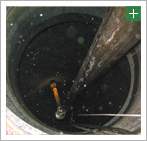About ACFM Technology
 What Is ACFM?
What Is ACFM?
ACFM is an electromagnetic technique for detecting and sizing flaws breaking the inspection surface of both ferrous and non-ferrous metals and alloys. ACFM is an acronym for alternating current field measurement and was developed during the 1980’s from the alternating current potential drop (ACPD) technique. The initial theoretical work was undertaken at University College London but since then the development and marketing of practical instruments and probes has been carried out by TSC Inspection Systems located in the UK.
ACFM’s conventional application is for the detection and characterization of fatigue cracks in and around welded joints but is increasingly used to detect a variety of surface breaking defects.
Since 1991 ACFM has been used routinely for the inspection of underwater structures all over the world.
ACFM is also being used in the petrochemical, nuclear, steel and railway industries, as well as research on civil engineering structures such as bridges and amusement rides.
Key features of the technique which lends itself to internal inspection of coke drums include its suitability for remote, robotic deployment and the ability to work on relatively dirty surfaces.
How Does ACFM Work?
ACFM operates using a hand held or remotely deployed probe which induces a locally uniform AC field into the test surface. This field flows in a thin skin on the surface of the material and is disturbed by the presence of surface breaking defects. These changes are detected by two sensors mounted in the probe which measure the magnetic field strength in two orthogonal directions. One sensor, termed the Bx sensor, measures the reduction in flux density around the center of the crack, which is predominantly caused by the defect’s depth. The other sensor, termed the Bz sensor, produces a response due to the curvature of the currents flowing around the ends of the defect. This sensor indicates the position of the defect ends and hence the surface length can be determined.

